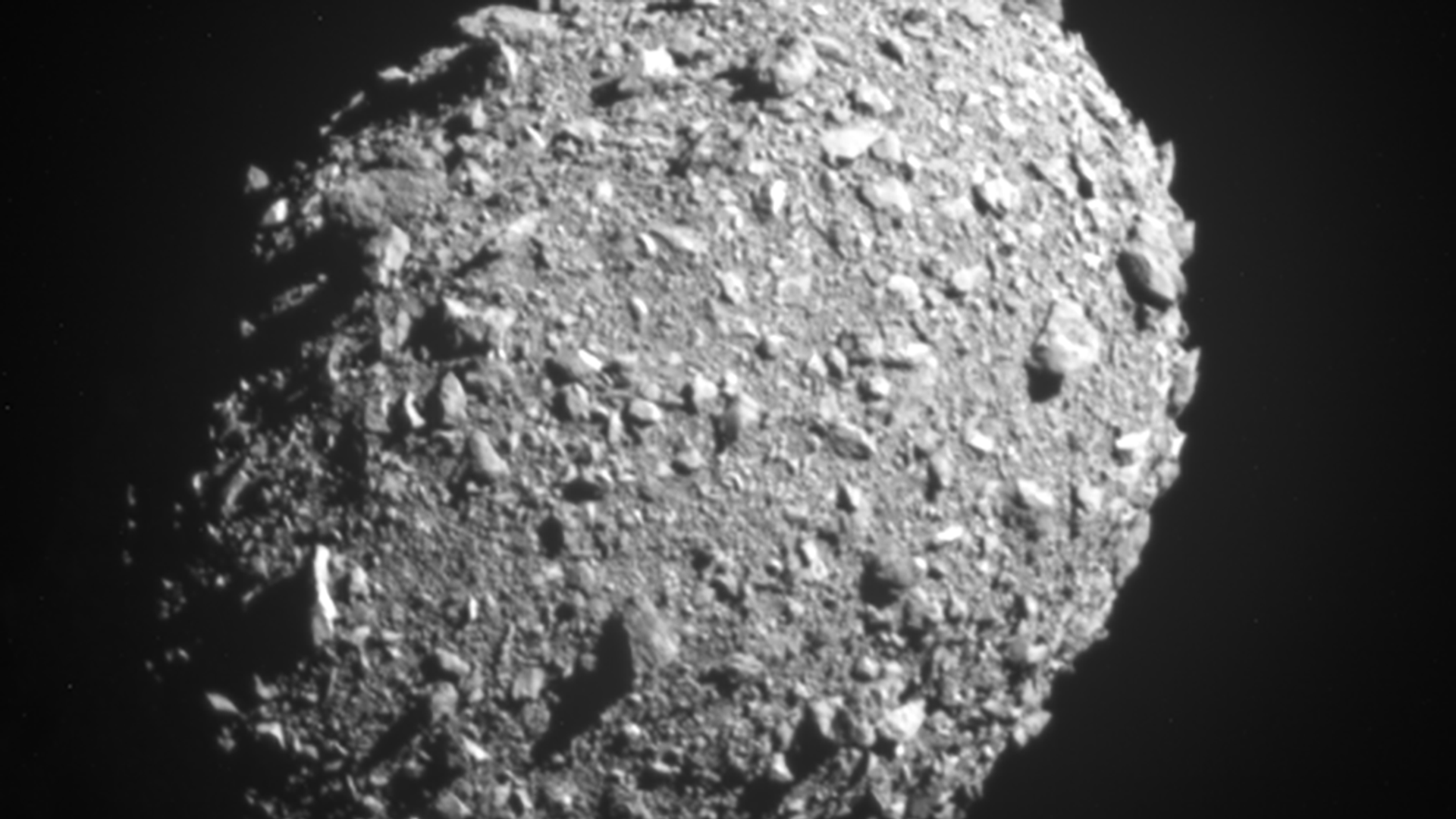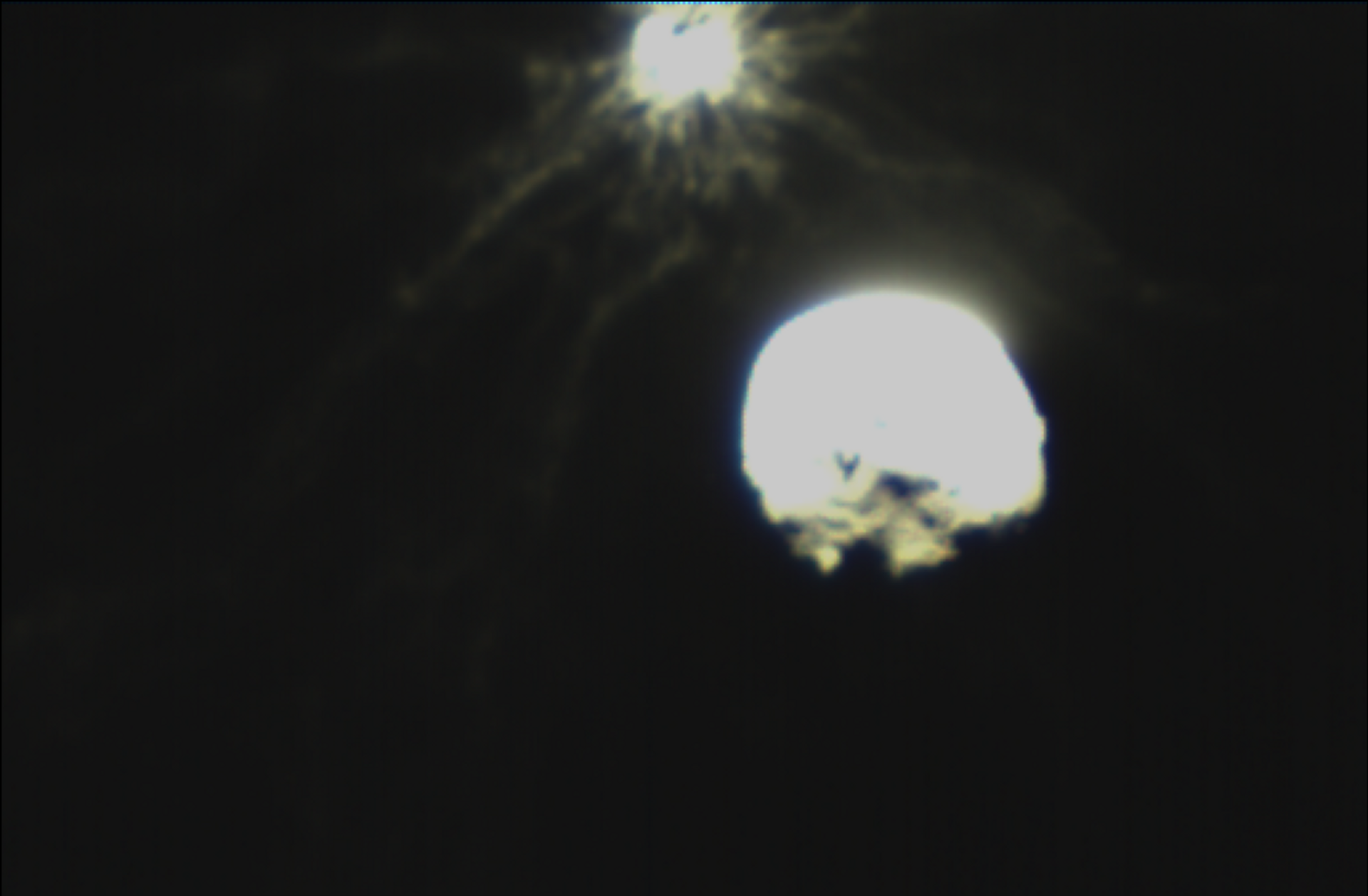Scientists: NASA’s Asteroid-Diverting DART Test ‘Validated’ Using Kinetic Impact for Earth Defense

© NASA . NASA/Johns Hopkins APL
Subscribe
A group of five closely related studies have corroborated the accuracy of previous conclusions: when NASA crashed a spacecraft into an asteroid last year as part of an experiment, it altered the rock’s course much more than was expected. The method is now seen as the best way to protect Earth from rogue, civilization-ending asteroids.
In November 2021, the US space agency NASA launched the Double Asteroid Redirection Test (DART) spacecraft on a mission to collide with a small asteroid, Dimorphos, which orbits a much larger rock called Didymos. The mission was to test if such impacts could divert an asteroid’s path enough for it to avoid impacting Earth.
According to the five papers published in Nature on Wednesday, the experiment was an astounding success, and diverted Dimorphos’ orbit much more than they had expected.
"DART's impact demonstrates that the momentum transfer to a target asteroid can significantly exceed the incident momentum of the kinetic impactor, validating the effectiveness of kinetic impact for preventing future asteroid strikes on the Earth,” one paper said.
Their study verified a previous study’s conclusion that Dimorphos’ orbit of Didymos became 33 minutes faster after the impact instead of the 7-minute increase scientists had expected.

Image captured by the Italian Space Agency’s LICIACube a few minutes after the intentional collision of NASA’s Double Asteroid Redirection Test (DART) mission with its target asteroid, Dimorphos, captured on Sept. 26, 2022.
© NASA . ASI/NASA
“This large orbit period change suggests that ejecta contributed a significant amount of momentum to the asteroid beyond what the DART spacecraft carried,” the second paper said.
For weeks after the September 2022 impact, astronomers tracked a plume of debris spewing from Dimorphos, which dragged behind it and gave it a slightly comet-like appearance. Their study found the impact had decreased the asteroid’s mass by 0.3% to 0.5%, a third paper and a fourth paper found, and the loss of mass affected its momentum, said a fifth one.
"The successful impact of the DART spacecraft with Dimorphos and the resulting change in Dimorphos's orbit," the fifth paper said, "demonstrates that kinetic impactor technology is a viable technique to potentially defend Earth if necessary."
Dimorphos is not a small asteroid, either, being about 560 feet across, or roughly the height of the Washington Monument in Washington, DC, so the fact that a relatively small spacecraft could affect it so dramatically is promising.
Fortunately, an Earth-shattering asteroid isn’t expected to pass near Earth for another 100 years, by which time we may have much better deflection abilities than kamikaze spacecraft.


